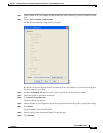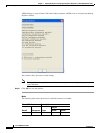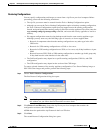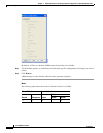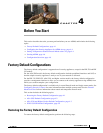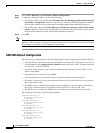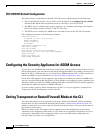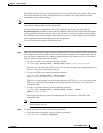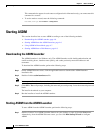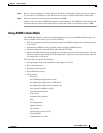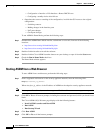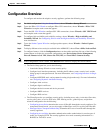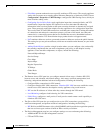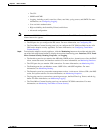
4-5
Cisco ASDM User Guide
OL-16647-01
Chapter 4 Before You Start
Setting Transparent or Routed Firewall Mode at the CLI
For multiple context mode, the system configuration is erased, which removes any contexts. If you again
add a context that has an existing configuration that was created for the wrong mode, the context
configuration will not work correctly.
Note Be sure to create your context configurations for the correct mode before you add them again, or add
new contexts with new paths for new configurations.
If you download a text configuration to the security appliance that changes the mode with the
firewall
transparent command, be sure to put the command at the top of the configuration; the adaptive
security appliance changes the mode as soon as the command is executed, and then continues reading
the configuration that you downloaded. If the command occurs later in the configuration, the adaptive
security appliance clears all preceding lines in the configuration.
To set the firewall mode, perform the following steps.
Note In multiple context mode, you must perform these steps in the system execution space.
Step 1 Make sure you back up the startup or running configuration file to use for reference before creating the
new configuration. In single context mode or from the system configuration in multiple mode, you can
copy the startup configuration file or running configuration file to an external server or to local Flash
memory, using one of the following commands.
• To copy to a TFTP server, enter the following command:
hostname# copy {startup-config | running-config} tftp://
server
[/
path
]/
filename
Where server is the name of the TFTP server, path is the directory path to the configuration file, and
filename is the name of the configuration file.
• To copy to an FTP server, enter the following command:
hostname# copy {startup-config | running-config}
ftp://[
user
[:
password
]@]
server
[/
path
]/
filename
Where user is your username, password in the password to the FTP server, server is the name of the
FTP server, path is the directory path to the configuration file, and filename is the name of the
configuration file.
• To copy to local Flash memory, enter the following command:
hostname# copy {startup-config | running-config} {flash:/ | disk0:/ |
disk1:/}[
path
/]
filename
Where path is the directory path to the configuration file, and filename is the name of the
configuration file.
Note Be sure the destination directory exists. If it does not exist, use the mkdir command to create
the destination directory.
Step 2 To change the mode, enter one of the following commands:
• To set the mode to transparent, enter the following command:
hostname(config)# firewall transparent



